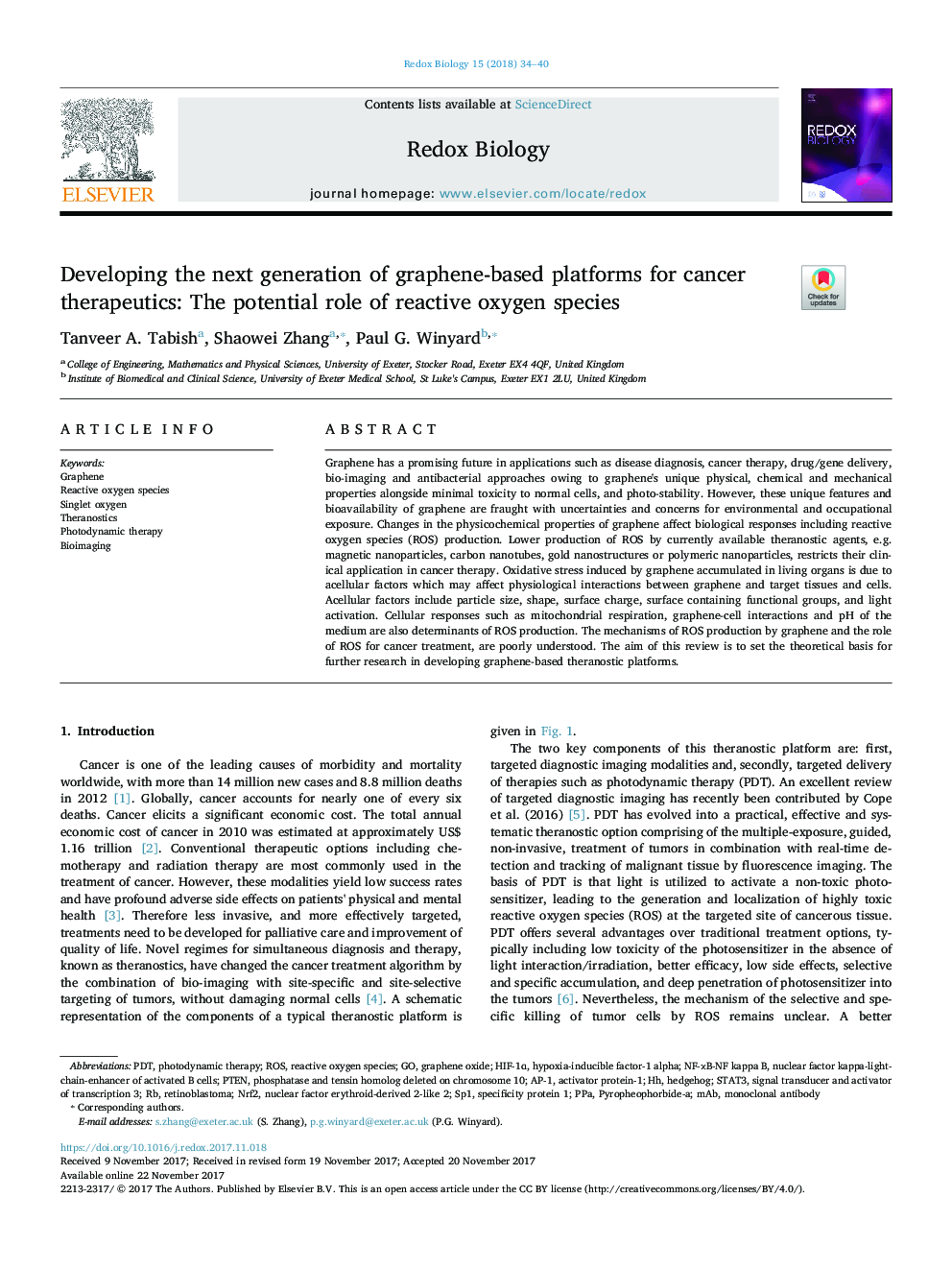| کد مقاله | کد نشریه | سال انتشار | مقاله انگلیسی | نسخه تمام متن |
|---|---|---|---|---|
| 8286503 | 1535835 | 2018 | 7 صفحه PDF | دانلود رایگان |
عنوان انگلیسی مقاله ISI
Developing the next generation of graphene-based platforms for cancer therapeutics: The potential role of reactive oxygen species
ترجمه فارسی عنوان
توسعه نسل بعدی سیستم عامل های مبتنی بر گرافین برای درمان سرطان: نقش بالقوه گونه های اکسیژن واکنشی
دانلود مقاله + سفارش ترجمه
دانلود مقاله ISI انگلیسی
رایگان برای ایرانیان
کلمات کلیدی
TheranosticsSTAT3Pyropheophorbide-anuclear factor erythroid-derived 2-like 2mAbPPAAP-1PDTNrf2ROS - ROSSp1 - SP1Monoclonal antibody - آنتی بادی مونوکلونالGraphene oxide - اکسید گرافنSinglet oxygen - اکسیژن مجزاBioimaging - تصویربرداری زیستیHedgehog - جوجهتیغی، خارپشتPhotodynamic therapy - درمان فتودینامیکretinoblastoma - رتینوبلاستوما، تومور شبکیهnuclear factor kappa-light-chain-enhancer of activated B cells - فاکتور هسته ای kappa-light-chain-enhancer از سلول های B فعال شده استphosphatase and tensin homolog deleted on chromosome 10 - فسفاتاز و هومولوگ تنسین حذف شده در کروموزوم 10signal transducer and activator of transcription 3 - مبدل سیگنال و فعال کننده رونویسی 3Specificity protein 1 - مشخصات پروتئین 1hypoxia-inducible factor-1 alpha - هیپوکسی القاء عامل 1 آلفاactivator protein-1 - پروتئین فعال کننده-1Pten - ژن PTENGraphene - گرافنReactive oxygen species - گونههای فعال اکسیژن
موضوعات مرتبط
علوم زیستی و بیوفناوری
بیوشیمی، ژنتیک و زیست شناسی مولکولی
سالمندی
چکیده انگلیسی
Graphene has a promising future in applications such as disease diagnosis, cancer therapy, drug/gene delivery, bio-imaging and antibacterial approaches owing to graphene's unique physical, chemical and mechanical properties alongside minimal toxicity to normal cells, and photo-stability. However, these unique features and bioavailability of graphene are fraught with uncertainties and concerns for environmental and occupational exposure. Changes in the physicochemical properties of graphene affect biological responses including reactive oxygen species (ROS) production. Lower production of ROS by currently available theranostic agents, e.g. magnetic nanoparticles, carbon nanotubes, gold nanostructures or polymeric nanoparticles, restricts their clinical application in cancer therapy. Oxidative stress induced by graphene accumulated in living organs is due to acellular factors which may affect physiological interactions between graphene and target tissues and cells. Acellular factors include particle size, shape, surface charge, surface containing functional groups, and light activation. Cellular responses such as mitochondrial respiration, graphene-cell interactions and pH of the medium are also determinants of ROS production. The mechanisms of ROS production by graphene and the role of ROS for cancer treatment, are poorly understood. The aim of this review is to set the theoretical basis for further research in developing graphene-based theranostic platforms.
ناشر
Database: Elsevier - ScienceDirect (ساینس دایرکت)
Journal: Redox Biology - Volume 15, May 2018, Pages 34-40
Journal: Redox Biology - Volume 15, May 2018, Pages 34-40
نویسندگان
Tanveer A. Tabish, Shaowei Zhang, Paul G. Winyard,
